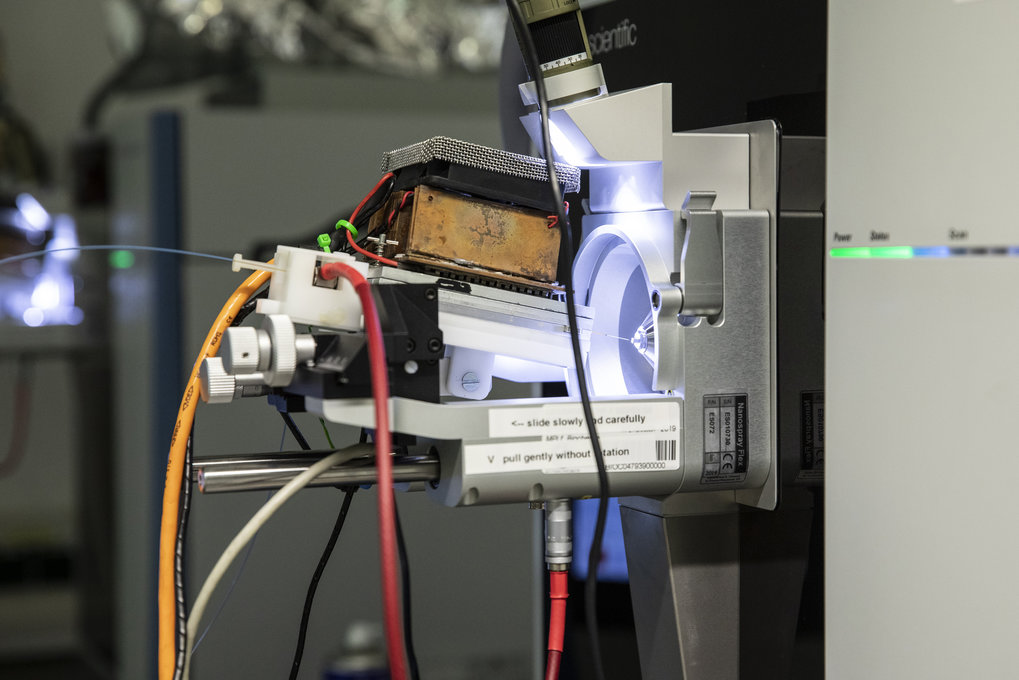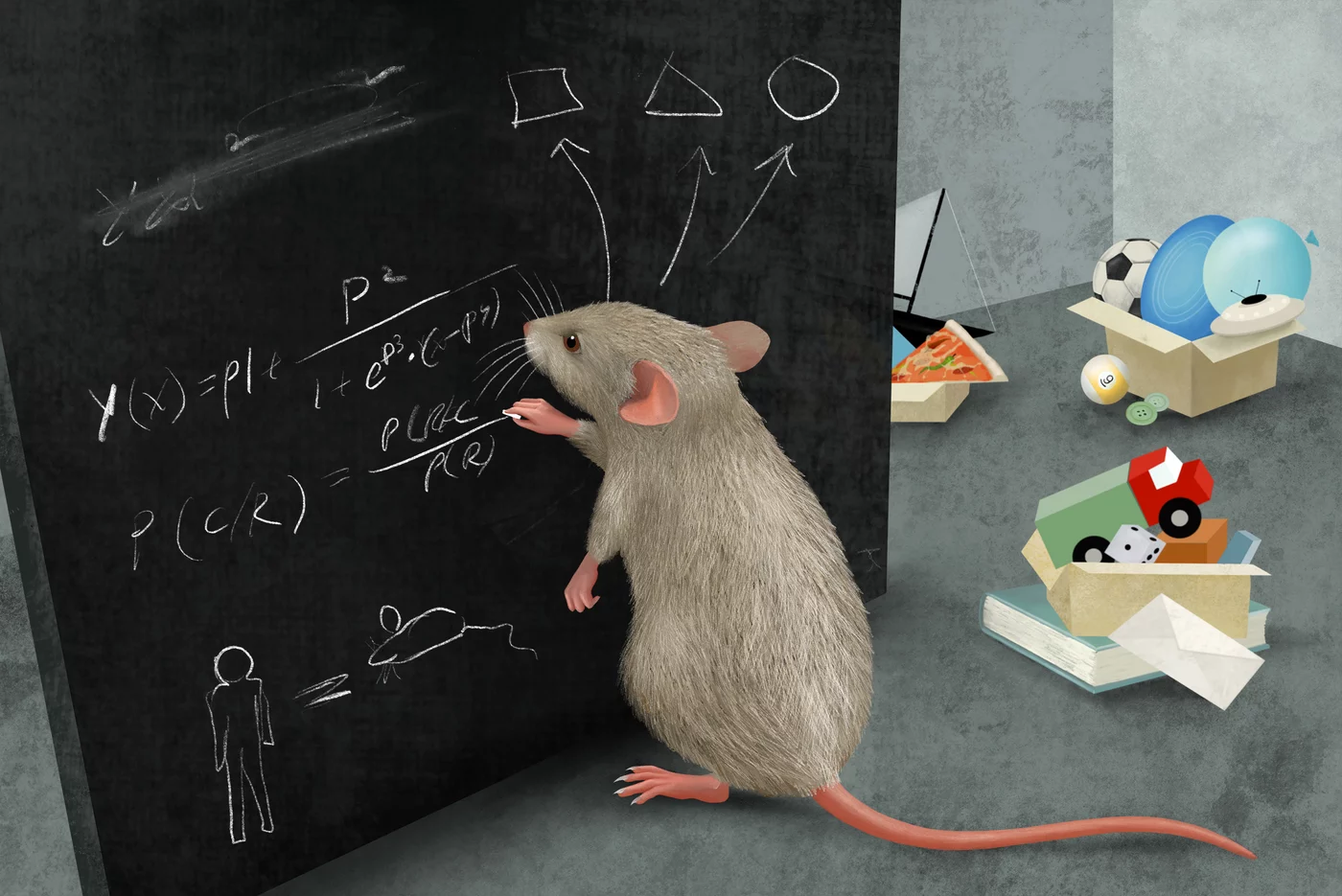News

Bavaria invests up to 500 million euros in the competitive development of the Martinsried Max Planck Campus into an outstanding international research hub
In the coming years, the life sciences will be the focus of scientific competition - both for attracting outstanding minds as well as in terms of corresponding infrastructures. The Max Planck Society (MPG) has therefore decided to further develop its Martinsried campus into a flagship for life sciences beyond Germany and Europe. The Free State of Bavaria intends to fund the project with up to 500 million euros over the next ten years, subject to the approval of the state parliament. Minister President Markus Söder and Max Planck President Martin Stratmann signed a corresponding Memorandum of Understanding on April 29, 2021 in the Max Planck House in Munich.
The Martinsried site is already a beacon in European biotechnology and characterized by close networking between academic research, medicine, and industry. The majority of the medium-sized companies located here are spin-offs from scientific institutions, many originating from the two Max Planck Institutes of Biochemistry and of Neurobiology in Martinsried. In the past five years alone, 40 new start-ups were founded. Martinsried has thus developed into the Munich biotech center, with almost 100 companies in total to date.

Schumacher, S., Vazquez Nunez, R., Biertümpfel, C., and Mizuno, N.
FEBS J, 2021, Online ahead of print.
doi: 10.1111/febs.16023
Bottom-up reconstitution of focal adhesion complexes
Focal adhesions (FA) are large macromolecular assemblies relevant for various cellular and pathological events such as migration, polarization and metastatic cancer formation. At FA sites at the migrating periphery of a cell, hundreds of players gather and form a network to respond to extra cellular stimuli transmitted by the integrin receptor, the most upstream component within a cell, initiating the FA signaling pathway. Numerous cellular experiments have been performed to understand the FA architecture and functions, however, their intricate network formation hampers unraveling the precise molecular actions of individual players. Here, in vitro bottom-up reconstitution presents an advantageous approach for elucidating the FA machinery and the hierarchical crosstalk of involved cellular players.

Schumacher, S., Dedden, D., Nunez, R.V., Matoba, K., Takagi, J., Biertümpfel, C., and Mizuno, N.
Science advances, 2021, 7.
doi: 10.1126/sciadv.abe9716
Structural insights into integrin α 5 β 1 opening by fibronectin ligand
Integrin α5β1 is a major fibronectin receptor critical for cell migration. Upon complex formation, fibronectin and α5β1 undergo conformational changes. While this is key for cell-tissue connections, its mechanism is unknown. Here, we report cryo-electron microscopy structures of native human α5β1 with fibronectin to 3.1-angstrom resolution, and in its resting state to 4.6-angstrom resolution. The α5β1-fibronectin complex revealed simultaneous interactions at the arginine-glycine-aspartate loop, the synergy site, and a newly identified binding site proximal to adjacent to metal ion-dependent adhesion site, inducing the translocation of helix α1 to secure integrin opening. Resting α5β1 adopts an incompletely bent conformation, challenging the model of integrin sharp bending inhibiting ligand binding. Our biochemical and structural analyses showed that affinity of α5β1 for fibronectin is increased with manganese ions (Mn2+) while adopting the half-bent conformation, indicating that ligand-binding affinity does not depend on conformation, and α5β1 opening is induced by ligand-binding.

What exactly happens when the coronavirus SARS-CoV-2 infects a cell? In an article published in Nature, a team from the Max Planck Institute of Biochemistry and the Technical University of Munich (TUM) paints a comprehensive picture of the viral infection process. For the first time, the interaction between the coronavirus and a cell is documented at five different proteomics levels during viral infection. This knowledge will help to gain a better understanding of the virus and find potential starting points for therapies.
When a virus enters a cell, viral and cellular protein molecules begin to interact. Both the replication of the virus and the reaction of the cells are the result of complex protein signaling cascades. A team led by Andreas Pichlmair, Professor of Immunopathology of Viral Infections at the Institute of Virology at TUM, and Matthias Mann, Head of the Department of Proteomics and Signal Transduction at the Max Planck Institute of Biochemistry, has systematically recorded how human lung cells react to individual proteins of the covid-19 pathogen SARS-CoV-2 and the SARS coronavirus, the latter of which has been known for some time.

Categorization is the brain’s tool to organize nearly everything we encounter in our daily lives. Grouping information into categories simplifies our complex world and helps us to react quickly and effectively to new experiences. Scientists at the Max Planck Institute of Neurobiology have now shown that also mice categorize surprisingly well. The researchers identified neurons encoding learned categories and thereby demonstrated how abstract information is represented at the neuronal level.
A toddler is looking at a new picture book. Suddenly it points to an illustration and shouts 'chair'. The kid made the right call, but that does not seem particularly noteworthy to us. We recognize all kinds of chairs as 'chair' without any difficulty. For a toddler, however, this is an enormous learning process. It must associate the chair pictured in the book with the chairs it already knows – even though they may have different shapes or colors. How does the child do that?

Müller-Reif, J.B., Hansen, F.M., Schweizer, L., Treit, P.V., Geyer, P.E., and Mann, M.
(IMPRS-LS students/alumni are in bold)
Mol Cell Proteomics, 2021, 100082, online ahead of print.
doi: 10.1016/j.mcpro.2021.100082
A new parallel high-pressure packing system enables rapid multiplexed production of capillary columns
Reversed-phase high performance liquid chromatography (HPLC) is the most commonly applied peptide separation technique in mass spectrometry-based proteomics. Particle-packed capillary columns are predominantly used in nano-flow HPLC systems. Despite being the broadly applied standard for many years capillary columns are still expensive and suffer from short lifetimes, particularly in combination with ultra-high-pressure chromatography systems. For this reason, and to achieve maximum performance, many laboratories produce their own in-house packed columns. This typically requires a considerable amount of time and trained personnel. Here, we present a new packing system for capillary columns enabling rapid, multiplexed column packing with pressures reaching up to 3000 bar. Requiring only a conventional gas pressure supply and methanol as driving fluid, our system replaces the traditional setup of helium pressured packing bombs. By using 10x multiplexing, we have reduced the production time to just under 2 minutes for several 50 cm columns with 1.9 um particle size, speeding up the process of column production 40 to 800 times. We compare capillary columns with various inner diameters (ID) and length packed under different pressure conditions with our newly designed, broadly accessible high-pressure packing station.

